► Alpine A110 coupe range reviewed
► On track, on road, in the UK and Europe
► ‘Alpine has absolutely delivered’
The Alpine A110’s debut in 2017 was hotly anticipated, and the firm has delivered beautifully on its on-paper promise. Few modern-era sports cars have been as well received. From the purity of the original A110, Alpine’s range has expanded to the potent A110S and GT for 2022, marking a full three-model line up as the car settles into maturity.
Read on for the full Alpine A110 review, of all versions: the Premiere, Pure, Legende and the new range-topping 296hp A110S and GT.
Alpine A110: a history lesson
Alpine was founded by Jean Rédélé in 1955. He’d raced a Renault 4 CV and scored class wins on the Mille Miglia and Critérium des Alpes. It’s the latter that inspired the company name, and the philosophy behind his cars: cars that weren’t necessarily the most powerful, but punched above their weight because they were so light and agile.
In a way, the A110 is the Mini recipe applied to a mid-engined sports car. No coincidence, then, that both won the Monte Carlo rally. In fact, Alpine won the WRC title in 1973, and went on to win Le Mans in 1978. This car has provenance, alright. And that bantamweight mass pays dividends on a cross-country road.
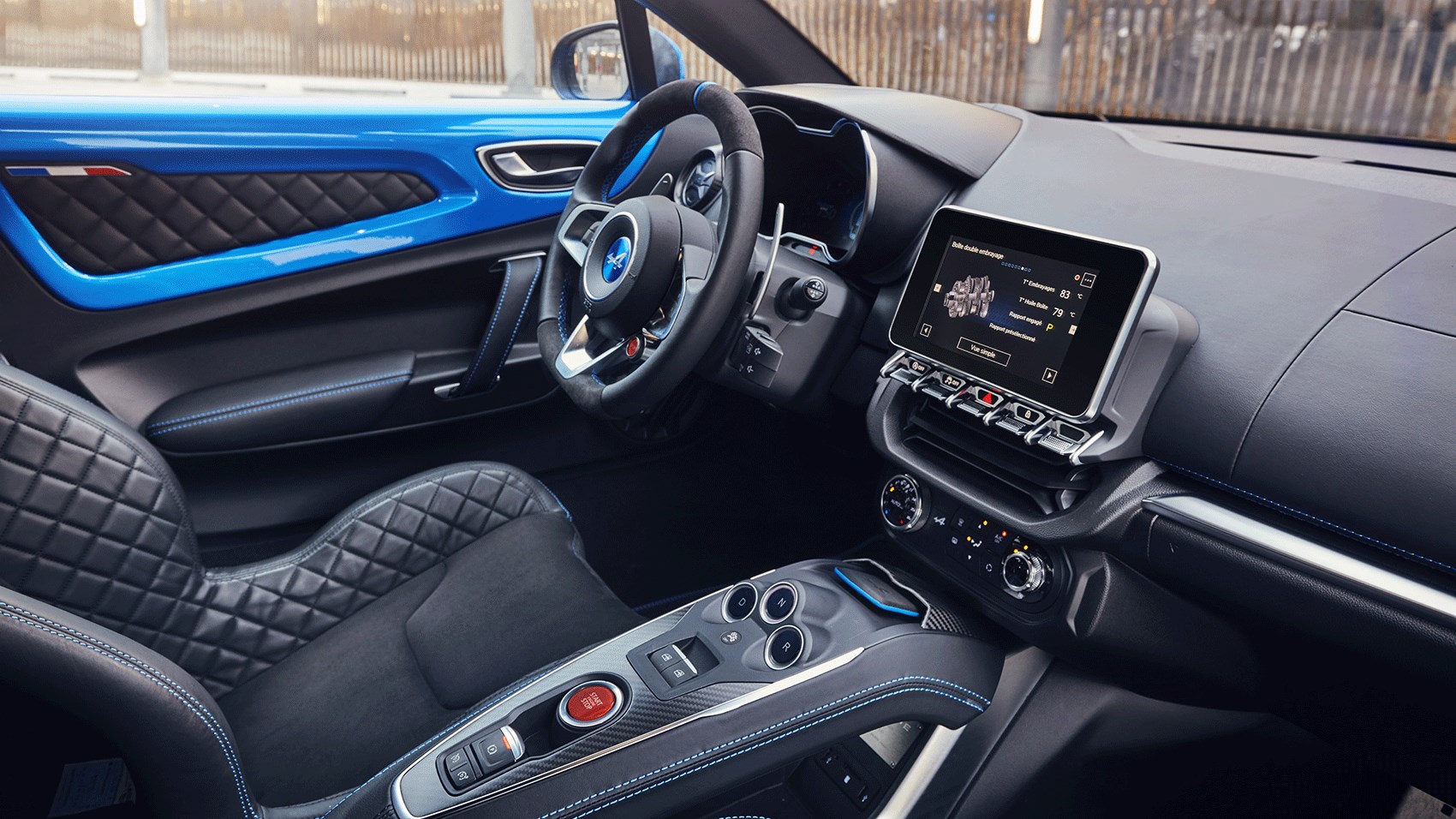
That’s also why the new A110 has been one of the most eagerly-awaited production cars of the past couple of years. Not only does it mark the return of the Renault-owned Alpine brand for the first time since production ended in 1995, but has been built from the ground up to be as close to its forebear as it can. The earlier A110, produced between 1962 and 1971, is the brand’s most iconic model, and inspiration for the new car.
The new-look equivalent wears the same badge and has been developed by a dedicated team at Renault Sport in Dieppe. What, they wondered, would an A110 look and feel like if it had never left production, but instead evolved over generations? They didn’t mention a 911, but you get the idea.
What are the specs?
The spec sounds as promising as those evocative new Alpine looks: a mid-engined aluminium sports car that’s a little over four metres long, produces 249bhp and weighs just 1100kg.
Its most obvious rivals include the Porsche 718 Cayman, Alfa 4C, Lotus Elise/Exige and the four-cylinder Jaguar F-type. But Alpine has also taken a look at the Toyota GT86 and toppy Audi TTs during development. Many of those rivals are no-longer offered, or cost considerably more, leaving the A110 in an enviable position.
The Alpine gets an all-new, bonded and riveted aluminium platform, a mid-mounted 1.8-litre turbocharged engine shared with the latest Renault Sport Megane and a seven-speed Getrag dual-clutch gearbox too. The latter is a wet-clutch unit with – unusually – bespoke ratios, and it’s different to both the disappointing dry-clutch unit in the Clio, and the wet clutch unit in that new Megane RS hot hatch.
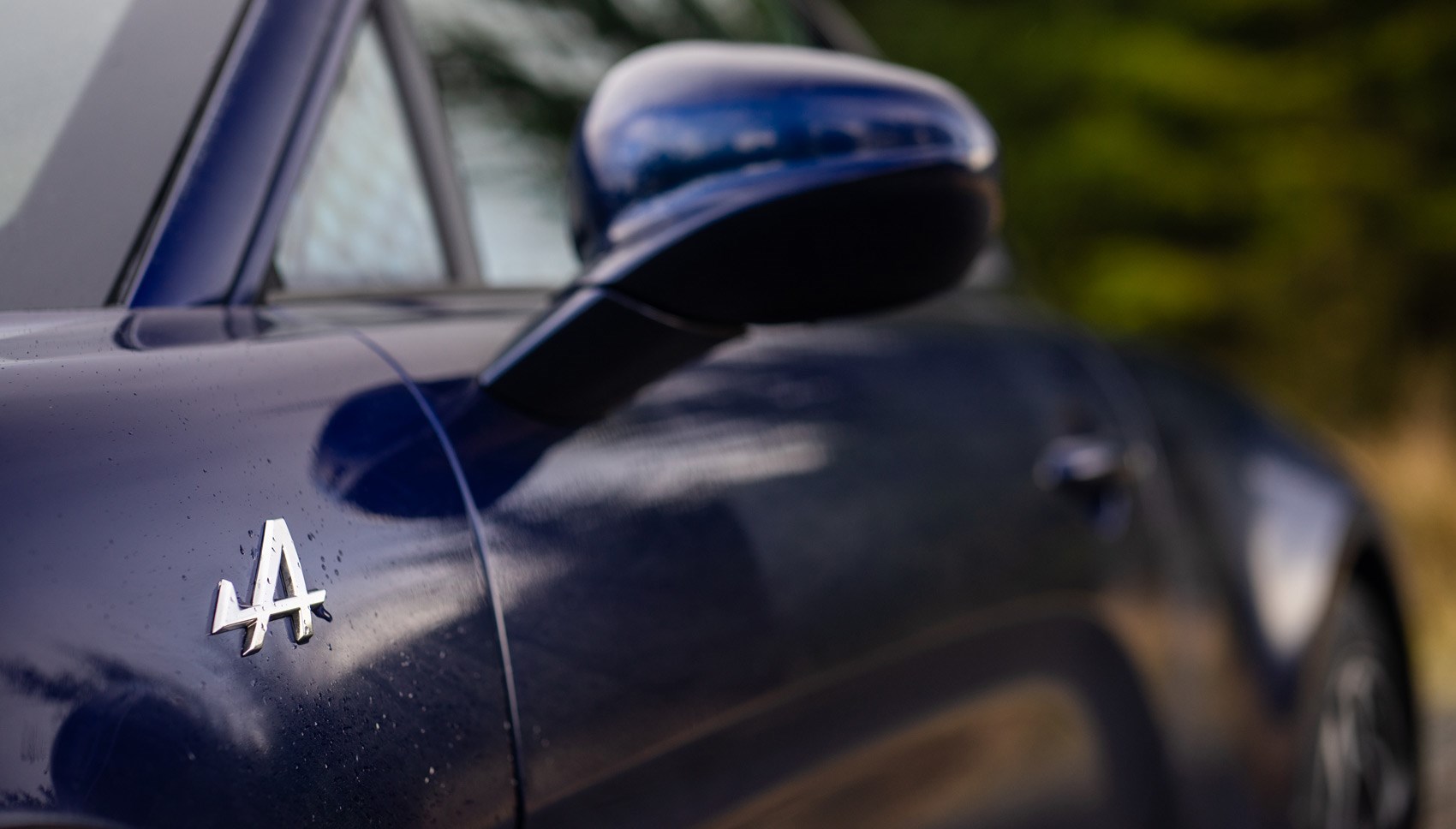
If you’re thinking that a manual gearbox would be lighter, the A110’s chief engineer David Twohig (who’s since departed to join Byton) argues that isn’t necessarily the case – having no clutch pedal and being able to engineer a floating centre console that didn’t need to house a manual transmission clawed back the kilos. It means this A110 will never be offered with a manual gearbox.
Once you’ve driven it, you’ll realise the DCT (dual-clutch transmission) suits this lithe two-seater well. The changes are near-instant, never leaving you waiting for the cogs to mesh. And the ability to relax and drive it in Auto about town only adds to the breadth of talents.
A mechanical limited-slip differential isn’t included. Instead, the ESC-based braking helps to juggle torque between the rear wheels. Four-piston Brembo calipers take care of stopping duties.
The suspension is by aluminium double wishbones all round, which keeps the Michelin Pilot Sport 4s in better contact with the road – in fact, Renault says the harder you go, the better the grip. This is why the springs can be relatively soft, and the anti-roll bars not particularly chunky – there’s no need to resist the roll of the car in the same way you do with a heavier car using strut-type front suspension.
The space required by double wishbones at the rear also means that only a four-cylinder engine will fit. Dreaming of a Clio V6 style multi-cylinder A110? Dream on…
There are no adaptive dampers, but you do have Normal, Sport and Track modes. These adjust the weight of the – electrically assisted – steering, throttle response, stability control settings, engine sound and gear shifts. You can turn the stability control all the way off and the instrument pack changes colour and design as you crank through the different modes.
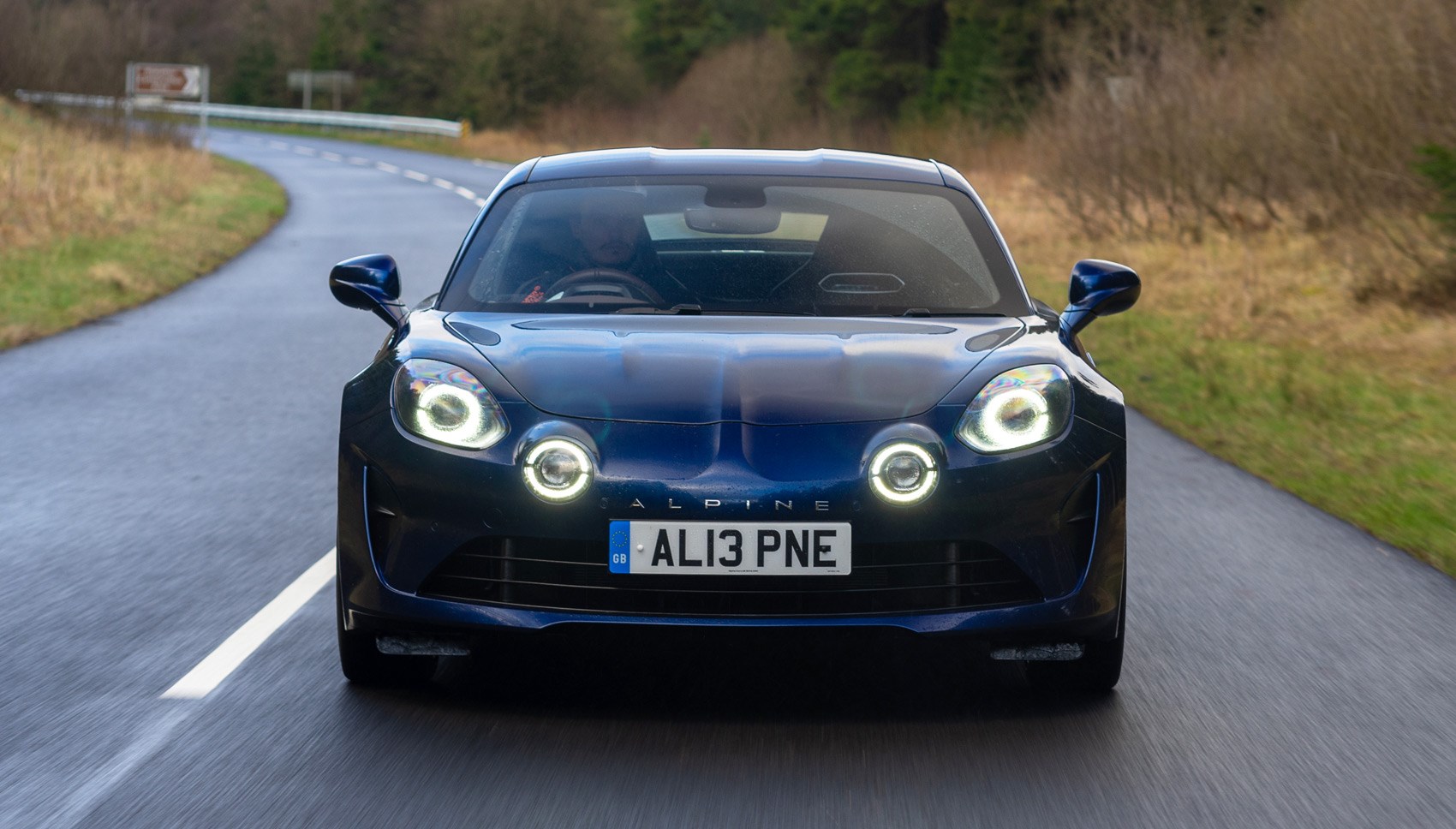
A flat underfloor and rear diffuser removes the need for a rear spoiler, and even the cooling vents at the rear are neatly hidden away next to the rear side windows and at the bottom of the rear screen.
Weight has been chased away wherever possible. Sabelt seats weigh 13kg each – half those of the outgoing Megane RS – clips for the ABS sensor cables are made from aluminium, and the parking brake element of the rear brake caliper has been integrated into the main calliper. We applaud the anal attention to detail of the diet.
Give me the list of versions
At first, all you could get your hands on was a Première Edition: a high spec with 18-inch wheels, 320mm discs all round (unusually), part-leather seats, sat-nav and a sports exhaust. Just 1955 were made at the start of Alpine’s production in late 2017 and were all sold out at £51,805 a pop in just five days. A Premiere Edition weighs 1103kg, providing quite a clue to what makes the A110 tick.
The Pure model became known as just the A110 in 2022, and comes on 17-inch alloys with smaller discs but the same four-piston calipers. It gets touch-screen infotainment with nav, and a headline weight figure of 1102kg. Yours for £49,905; the previous Pure did without navigation and sports exhaust and was a few kg lighter.
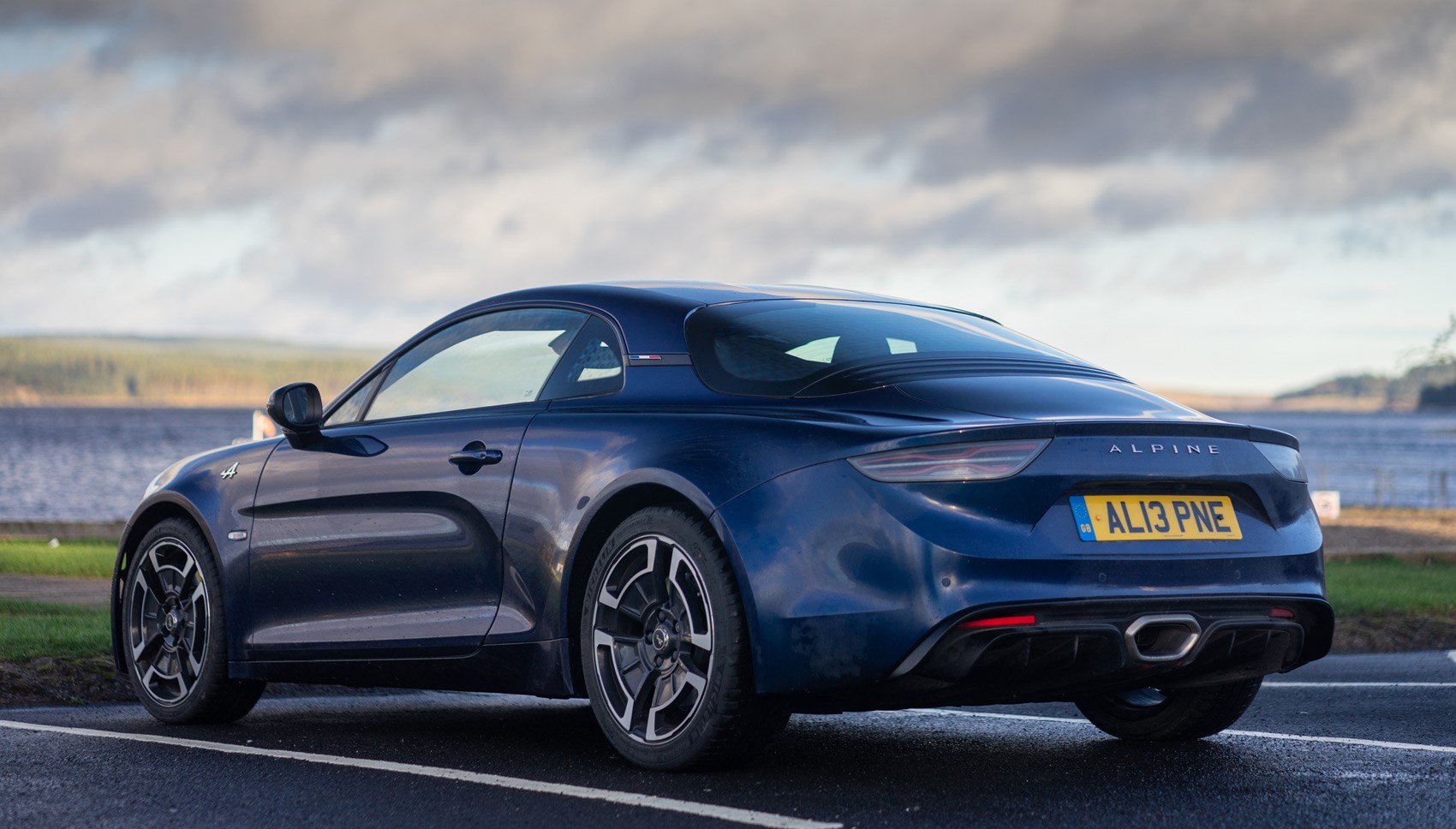
Finally, the Legende (pictured here in dark blue) is a slightly more comfort-focussed spec with full leather, fully adjustable seats (the others have a choice of three seat heights, that are spannered into place), but are still not quite as well equipped as a Première Edition. They’re the fattest versions of the A110, but still not exactly unfit – priced at £50,805 each.
If you wanted a Legende, but new, for 2022 the A110 GT offers the same leather-lined luxury, but with a twist. Quite a lot of twist, from the 296hp, 250lb ft engine shared with the latest refresh of the A110S
The A110S – a faster, harder version – was launched in 2019. That’s faster and harder quite literally – the former courtesy of a 39bhp power increase to 288bhp, and the latter from dramatically stiffened suspension. The S features 100% stiffer anti-roll bars and 50% firmer spring rates than the regular A110S, and sits on wider tyres. It also sits a touch lower than the standard car.
Improving that edge in 2022, the latest A110S has a small boost in power, and remapped throttle response and a touch more torque. All welcome, but the big news is the optional aero kit. This front splitter and rear spoiler, shaped in carbon fibre, adds 140kg of downforce and changes the airflow at the rear significantly, allowing an A110S so equipped to reach 171mph.
What’s the A110 like to drive?
In a word, fantastic. This is an unintimidating yet thrilling sports car to chuck down a sinuous road, and the best possible advertisement for reducing weight instead of increasing power. You sit very low down in bucket seats with high levels of both comfort and support; those well over six-feet tall have both ample legroom, and headroom, even when wearing a helmet on track.
Early on, you notice how eagerly and precisely the nose responds to steering inputs, much like a Toyota GT86. The brake pedal is firm and easy to modulate, the steering quick-witted and nicely weighted with decent feel, throttle response is keen, and there’s a fruity burble from the exhaust that in itself suggests a certain playfulness. So straight away there’s an energy to the way the A110 goes about its business.
With the three-model range introduced in 2022, there’s a predictable trio of characters on offer. Alpine suggest that the A110 and A110 GT share the same compliant chassis tune, with just the additional power and larger brakes to differentiate them, but in our tests, the feedback and ability to cope with poor road surfaces put the GT last, with the hard-edged S remarkably able to absorb real-world roads despite a distinctly firmer setup. Resist the optional 18-inch wheels on our test A110 and the difference would be clearer still.

It also rides nicely, its body staying spookily flat on even rougher surfaces as it soaks up bumps with a great deal of sophistication. This isn’t a complete magic carpet ride experience and tyre roar gets intrusive on harsher tarmac surfaces, but the overwhelming feeling is one of calm composure, of a car that doesn’t tug around on cambers – like the Alfa 4C – nor threaten to bounce you off a bumpy road when you press on. And yet it feels intimately connected to the surface all the same.
You could drive everywhere at quite modest speed in the A110 and still get a lot of enjoyment out of what is a very tactile sports car. It’s like a more grown-up, more serious MX-5 in that respect.
What about on track?
We did, at Circuit du Grand Sambuc. Up the pace and the A110 really starts to shine. It’s perhaps not as fast as you might expect given its fairly healthy 249bhp and very modest 1100kg, but it’s plenty quick enough, flexible from low revs, and feels willing to rev out beyond 6000rpm.
In Sport and Track modes, the gearshifts are also impressively snappy, and add to the frisky soundtrack with a lovely little slap of engagement. It’s a positive, mechanical kind of feeling – and the soundtrack is mega, with a well tuned exhaust note.
We drove in slippery conditions, but that gave us a great chance to play with the A110’s balance. This is where it gets really good, and the 44/56 weight distribution comes into its own. On a steady throttle, the A110 will gradually push into understeer, while very clearly communicating what’s going on to the driver. But it’s also extremely throttle adjustable, so if you snap shut the throttle mid-bend the nose will tuck into the apex and the Alpine will adopt a bit of sideways attitude. At this point, if you’ve got everything switched off, you can blip the responsive throttle and have the A110 hanging at all sorts of daft angles.
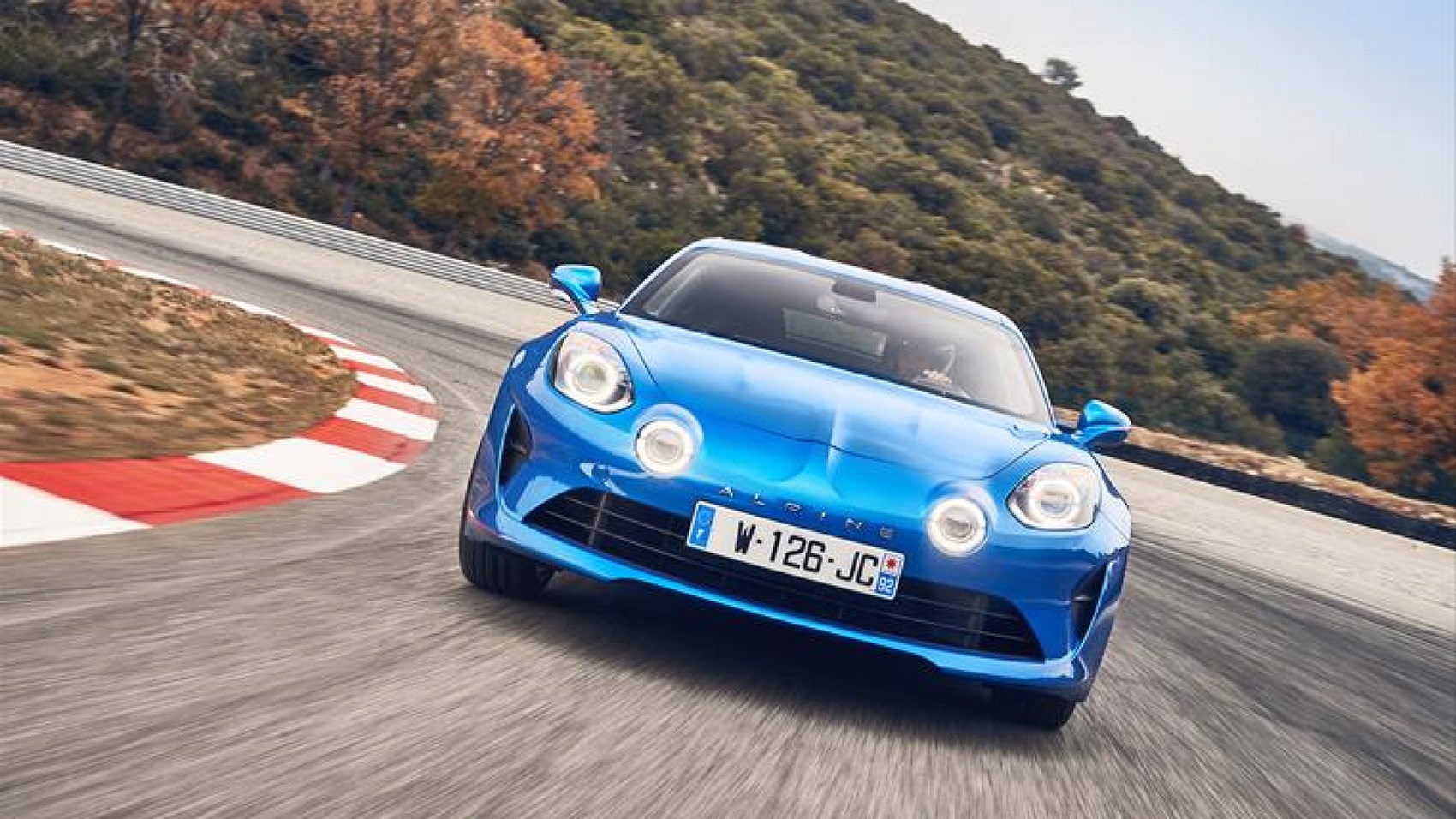
A proper limited-slip diff would make it even more precise but, in the wet at least, it still felt nicely controllable. Most impressive is what a progressive, communicative and benign machine this is, so that neither edging up to its limits nor going beyond them feels particularly scary.
The brakes too feel strong on track, with a nicely judged progression as the feedback builds under your foot.
And the hotter version? How does the Alpine A110S feel?
On the road, you immediately feel the firmer suspension. Although it rides assertively, it stays just the right side of aggressive. Gut feel says a Porsche 718 perhaps rides slightly more sweetly, but the A110S is tolerable and you could drive one every day without it becoming tiresome.
Body roll is dramatically reduced compared with the standard car, as is pitch. In 90% of situations the regular A110 is great but there are times when it can begin to tie itself in knots or get into a see-saw motion in fast direction changes on undulating roads, in ways the Porsche Cayman does not. The A110S is more composed, and more immediate in its responses, and far more of an objective match for the Cayman dynamically.
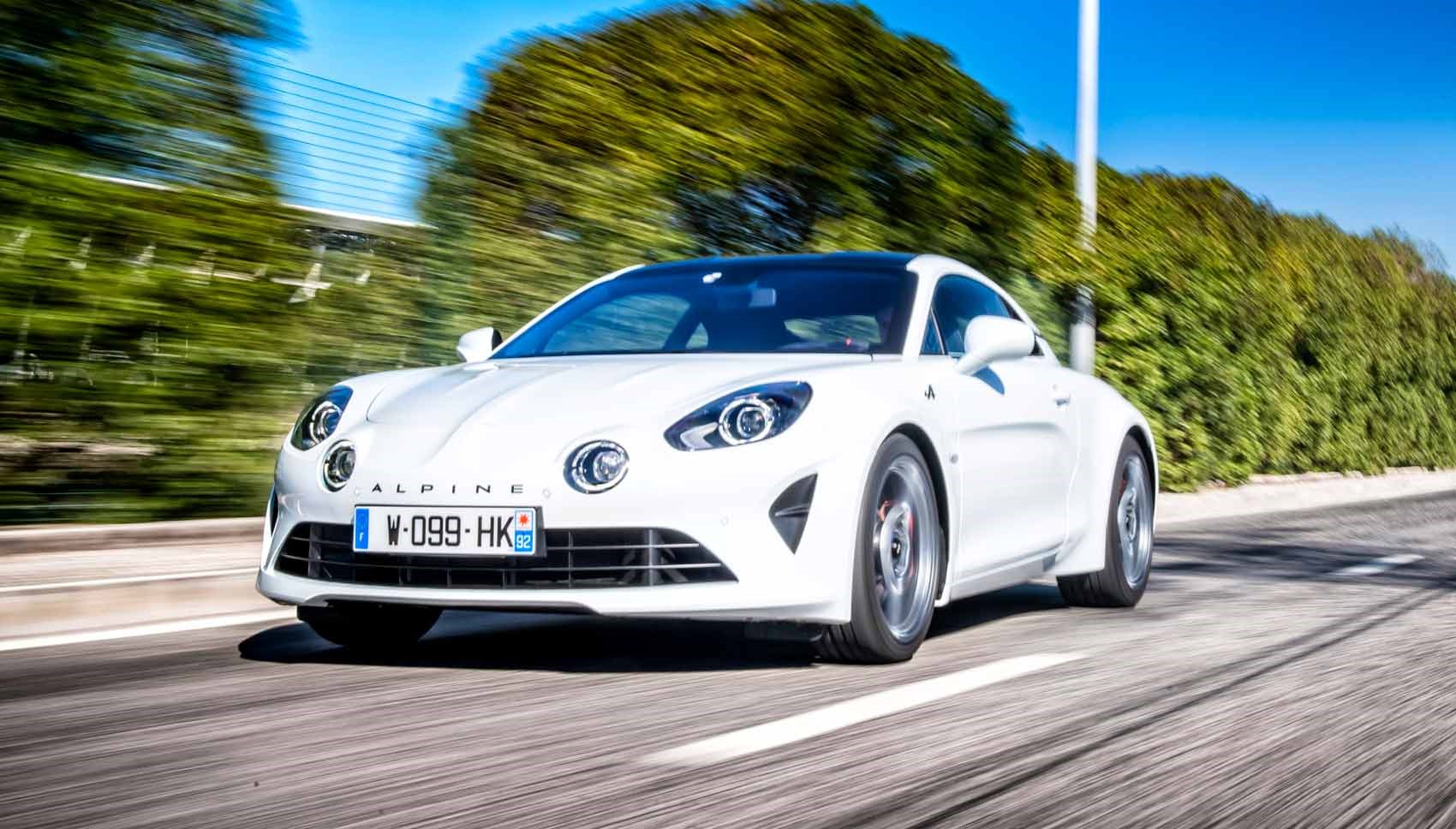
Happily, the steering is still light and delicate in feel – Alpine has resisted the urge to add unnecessary weight to make it feel ‘sporty’ – but it’s a little more immediate in its response than the regular car, perhaps with a touch more feel and feedback too. That may be partly a result of the larger tyre contact patches up front, but also the lowered ride height and stiffer anti-roll bars.
The extra shot of power hasn’t changed the car’s character. Performance is just right – potent enough to feel quick, without being too fast to extend on the road. Although the exhaust system is the same as the regular A110, the A110S has a deeper, more guttural engine note. Maybe it’s the 0.4bar extra boost pressure (there are plenty of appealing whooshes and gurgles from the air intake next to the rear quarterlight just over your shoulder), or maybe it’s the fact that peak torque lasts longer (all the way from 2000 to 6400rpm, the latter coinciding with peak power), making it more satisfying to use the full sweep of revs.
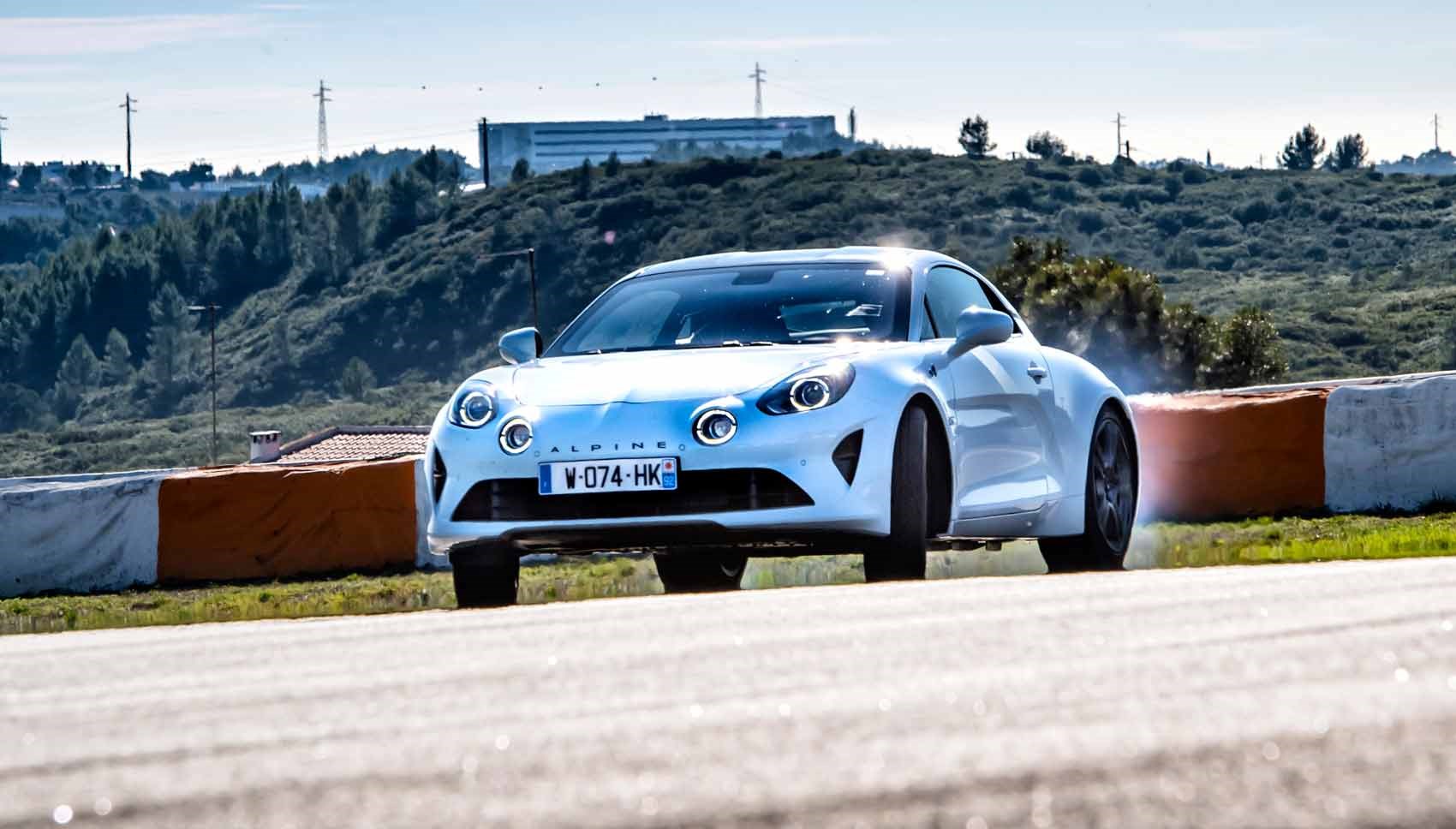
We sampled the A110S on track too at Estoril, and it’s more precise and accurate than the regular car. Its stiffer set-up actually makes it more biased towards understeer than the A110, but it’s still very adjustable if you have the knack, as a balletic passenger lap with development driver Laurent Hurgon shows.
Are there any downsides to the Alpine A110?
A minimum of mid-£40k is pretty steep, and you’ll get a Cayman with 50bhp more for a chunk less cash – though Alpine will argue you get a higher spec on the A110.
Then there’s the interior, which probably won’t wash with anyone cross-shopping a car from Stuttgart. The overall look and feel is sporty and purposeful, but there’s regular Renault switchgear like air-con controls from a Clio, Renault’s persistently irritating two-location cruise control buttons and a volume stalk that the brand has used since the 90’s.
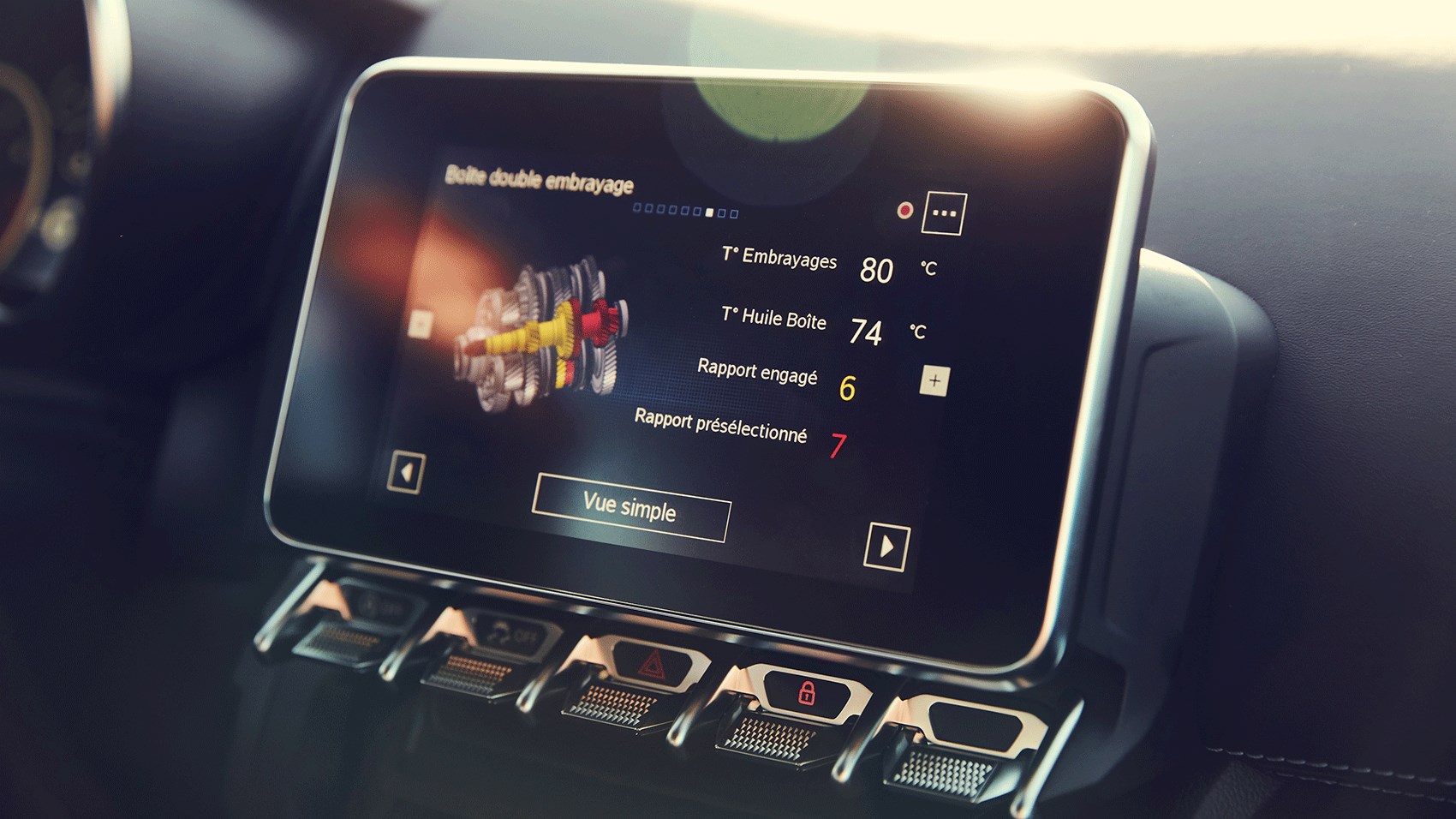
The infotainment system is the same one that Suzuki uses in the likes of the Swift and other models. This is not a thing to be proud of – the screen is woeful in Suzukis, so it’s even more so in a £50k sports car; it’s slow to respond to inputs, has low-rent graphics and looks ugly with a thick black bezel around the edge. Why didn’t Alpine ‘do an Audi’ and kill off the central screen for a more detailed version of its already-gorgeous digital instrument display like the TT and R8?
Alpine A110: verdict
There’s been a huge amount of pressure on the Alpine team to get the A110 right, and they’ve absolutely delivered.
It looks as desirable as any TT, Cayman, 4C or F-type, and in terms of dynamics and driving enjoyment there’s no doubt this is a five-star car. The price and interior niggles would lump this down to 4.5 in our book, but CAR doesn’t do half stars, and the A110 is just too much of a sports car dream to be rated a 4. Smashed it, Alpine. Absolutely smashed it.
More on the Alpine A110